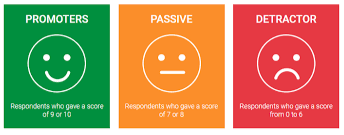The IT industry’s layoff crisis: how to protect employer brand

Image source: ymoran | Unsplash
The global economy felt the effects of the COVID-19 outbreak, and the IT sector was no exception. Because of the economic slump, various IT companies have announced layoffs. Since the beginning of 2023, the IT industry layoffs wave topped the media with a 649% spike in cases reported last year. When workforce reductions take place, the strength of an organization’s employer brand may suffer significantly.
Taking the layoffs at Twitter as an example, only 2% of the remaining employees suggest the company as a good place to work, and 1% believe that the company treated the affected employees with dignity. Understanding the consequences of layoffs on a company’s reputation will enable management to analyze perception trends and develop long-term solutions. One approach is to use key performance indicators (KPIs) such as # Employee Net Promoter Score (eNPS) or # Employment brand strength.
Employment brand strength
# Employment brand strength is an important KPI for any organization that wants to recruit and retain top talent and foster an engaging workplace while maintaining business viability. Employment brand strength is a metric that measures how prospective and current employees view a company.
Tracking # Employment brand strength can help companies monitor their progress over time and identify areas of improvement in different aspects such as brand awareness, work-life balance, career development opportunities, and social responsibility. This will result in a more positive work environment, the attraction of more top talent, and the achievement of their business objectives.
eNPS
Employee net promoter score is a KPI that companies use to measure employee loyalty and satisfaction. Similarly to the NPS for consumers, eNPS applies the same principle to workers, measuring how likely they are to recommend their company as a place to work. Because it is straightforward and easy to track. It can also assist businesses in assessing their employee experience and evaluating their objectives. eNPS can also be used to compare the performance of a company to that of its competitors.

Figure 1. eNPS | Source: Questpro
eNPS is a valuable KPI that can assist firms in measuring and improving employee happiness and loyalty, leading to increased productivity, fewer attrition, and improved business results.
How to measure it
- Employee surveys can be utilized to assess employee satisfaction, engagement, and retention. eNPS is the most dependable and widely used employee survey method. It simply asks, “On a scale from 0 to 10, how likely are you to recommend your workplace?” Negative aggregate eNPS scores (Promoters – Detractors) are a major warning sign.
- Candidate surveys can be used to identify areas in which the employer brand appeals to potential candidates.
- Social media monitoring can be used to observe online conversations.
Communication is the key
According to Forbes, the company should exhibit compassion for the process. Employees will have numerous questions, and managers must address their concerns, so it is important to implement an open-door policy. Providing job search assistance may also help companies reduce the likelihood of negative comments. Companies should also monitor and anticipate such remarks on social media platforms like Glassdoor and prepare diplomatic responses.
However, it is preferable to forestall it from the beginning.
After Nokia’s 2008 earnings rose 67%, the CEO let off 2,000 or more employees to save expenses, which harmed the employer brand and triggered demonstrations.Three years later, in 2011, Nokia had to go through another layoff wave, but at this point they reformed and included the impacted staff to guarantee a seamless transition and avoid negative feedback.
By handling layoffs with transparency, fairness, and compassion, focusing on employee retention and engagement, and tracking the reputation of the employer brand properly, companies can mitigate the damage and maintain a positive work environment amid the tech industry crisis.

